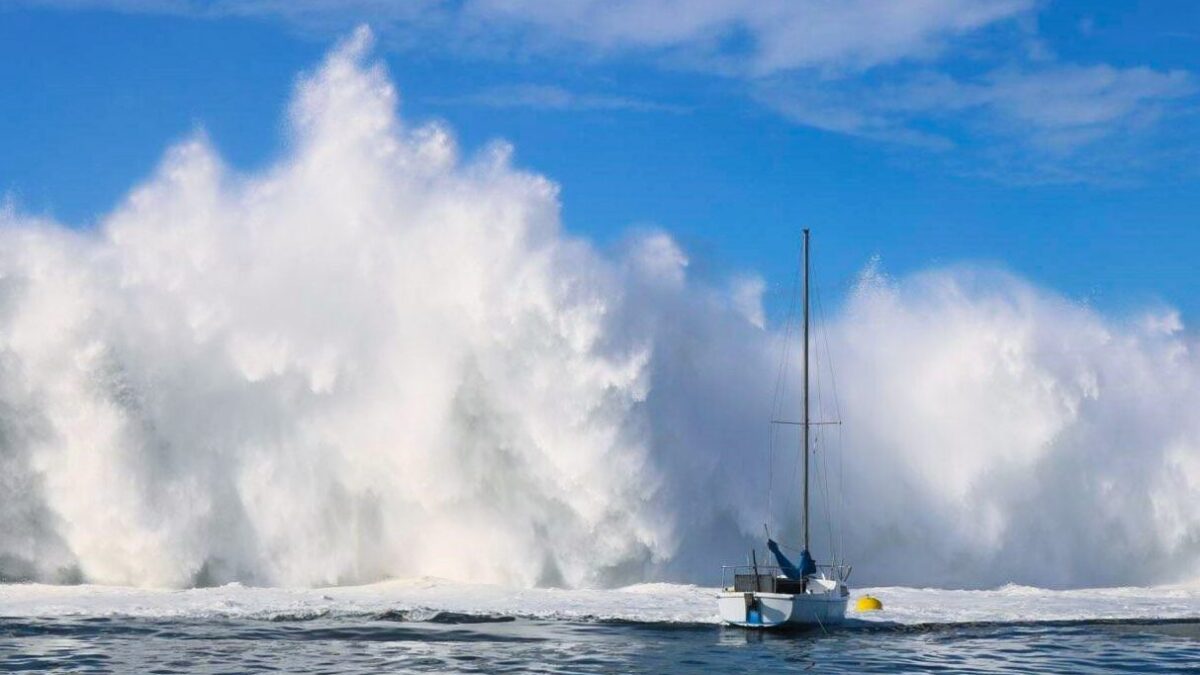The Sad State of US Beaches for Climate Change Preparedness
As a longtime supporter and local chapter member of Surfrider Foundation we wanted to share their annual report about the current state of our beach communities in preparing for climate change. It’s not surprising that 70% of our coastal states are doing a poor job but it’s disappointing that two states actually did worse in 2023 than 2022. This article was published on Surfrider.org last week. Enjoy!
The sailboat in the image above is sitting inside Redondo Harbor behind a 20 foot breakwall. ? by eMaximize.
————————
Surfrider Foundation is deeply invested in helping states and local communities proactively plan for the effects of climate change. Seven years ago, we started putting our findings into a “report card” that tracks how well coastal states are managing coastlines and preparing for rising seas and extreme weather.
This year, we’re proud to present the 7th annual Surfrider Foundation’s State of the Beach Report. While one state in particular improved its score over the past year, two others went backward.
Data shows that nearly 70% of coastal states are doing a poor job of managing their coastlines and planning for climate change impacts. This is particularly concerning as climate change impacts are being felt more intensely along our nation’s coastal communities. In 2023, a study published by Intergovernmental Panel on Climate Change (IPCC) warns:
“The climate time-bomb is ticking. The IPCC’s report is a how-to guide to defuse the climate time-bomb. It is a survival guide for humanity.”
These warnings from scientists, and the continued impacts of climate change, are clear indications that all levels of government must take more responsibility to curb climate change and proactively plan to protect our coastal communities.
Here’s the good news…
Ten states (up from eight states in the past) earned either a grade of ‘A’ or ‘B’ based on relevant criteria and are doing a ‘good or better’ job of protecting their beaches.
The highest-scoring states had strong policies regarding coastal building setbacks, restrictions on coastal armoring, limiting development/redevelopment in harm’s way, and are advancing progressive sea level rise policies that encourage local governments to incorporate climate adaptation measures into their land use plans.
Out of the 31 states and territories assessed, 21 earned a grade of C or less and are doing an ‘adequate to poor’ job. These states tend to have less stringent policies regarding development in hazardous coastal zones, ineffective/nonexistent prohibitions on coastal armoring, poor sediment management, and lack sea level rise policies.
Moreover, states that score poorly, often lack effective implementation of existing laws and policies. Even if the state passes legislation, but state and local agencies are not implementing the laws, the state’s grade will drop. Over the years, New Jersey and Florida have embodied this trend of passing strong climate change impact laws, but never actually implementing them. Oftentimes, deadlines are missed or extended, and the actual rule-making for regulations completely languishes. That is precisely why we do this report every year — to ensure states are not only passing important legislation to protect our coastlines, especially in light of climate change, but are also properly implementing the laws and policies on the books.
Who Improved?
Surfrider’s 2023 State of the Beach Report found that one state improved its grade, Washington, the evergreen state.
Washington’s grade rose to an ‘A’ when the state took impressive steps toward improving how the state and local communities respond and adapt to climate change. In addition to passing a bill that requires sea level rise analysis to be incorporated into local land use plans, Governor Inslee also set aside $3.9 million for coastal hazards planning. Washington also received $74.4 million through the Bipartisan Infrastructure Law and Inflation Reduction Act to fund the state’s climate resilience planning and projects. The combination of these efforts improved the state’s grade.
Who got worse?
Two states, Florida and New Jersey, experienced grade reductions.
New Jersey’s grade went from a D to an F due to a lack of implementation of laws and policies previously signed into law. The state has failed to implement a 2020 Executive Order that requires developers to analyze climate change impacts when planning new developments. In addition, the state has not properly implemented legislation that would require local land use plans to analyze sea level rise. While the state passed legislation in 2023 that requires sea level rise disclosures in a real estate transaction, the law could be stronger by using a higher rate of sea level rise. Moreover, the sea level rise disclosure is moot if the state continues to allow new development in areas prone to sea level rise and is not implementing climate change laws on the books. Due to the state backing away from commitments to plan for climate change impacts, New Jersey’s grade has fallen back to an F.
In Florida, their grade went from a C- to a D- because the state took regressive steps in coastal management and planning for sea level rise. Governor DeSantis established The Hurricane Restoration Reimbursement Grant Program which uses taxpayer dollars to reimburse private homeowners who build seawalls in hurricane-impacted communities. Surfrider believes this is an egregious use of public funds. The state also passed a hurricane relief bill that prohibits any effort to enact local building moratoriums or development regulations in areas impacted by Hurricane Ian — disincentivizing communities from implementing adaptation or land development policies to respond to climate change impacts. Finally, the state is behind on its timeline to complete vulnerability assessments, as well as statewide flood vulnerability and sea level rise datasets. These new policies brought the state’s grade down.
Where we go from here…
Despite the increasing impacts of climate change, positive advancements to rein in the climate crisis were made in the U.S., ranging from the federal level, all the way down to small townships. Nationally, both the Biden administration and Congress have made progress. In 2023, unprecedented funds from landmark legislation, the Inflation Reduction Act (IRA) and Bipartisan Infrastructure Law (BIL), became available for cities, states, and tribes to address climate change.
Over the year, Surfrider advocated that BIL and IRA funds go specifically toward coastal restoration and climate-resilience planning. In a major victory for our ocean and coasts, an unprecedented $6 billion was earmarked for coastal resilience.
In March 2023, Surfrider was invited to meet with the Biden Administration at the White House where we discussed coastal resilience funding and ways to improve the implementation of climate adaptation laws and policies.
To help better educate the public about these BIL and IRA funds, Surfrider published a guide that tribes, states, and cities can use to identify funds that can be used to:
- Update land use plans to prepare for climate change impacts and sea level rise.
- Support community-driven relocation for vulnerable infrastructure such as transportation, homes, businesses, hospitals, etc.
- Advance nature-based solutions, including:
- Assisting communities with protecting & restoring coastal dunes, wetlands, and “blue carbon” ecosystems, and use nature-based solutions in disaster recovery;
- Expanding financing to frontline communities for nature-based solutions and habitat conservation easements; and
- Partnering with communities, tribal, and state/local governments to establish habitat and blue carbon migration pathways to ensure landward space for sea level rise.
Once you’re done checking out the report, we encourage you to share it with your local decision-makers and ask them how they plan to improve coastal management and protect your community against sea-level rise.
Together, we can push our leaders to take these grades seriously and begin to proactively plan for sea level rise to protect our ocean, waves, and beaches for future generations.
Thanks For Reading the best men’s lifestyle blog!








